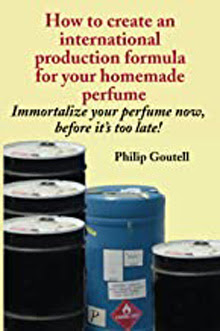If you are just getting started with perfume creation, the Workbook makes you aware of the many aroma materials that exist out there that are being used daily by professional perfumers.
If you've been working with perfume for some time, you might be more interested in the tools available to you in the Workbook -- tools that suggest tweaks for your perfumes, to give them more balance, or more complexity, or greater tenacity.
So far on my website I've just touched on the installed database of over 600 aroma materials. The database can be edited and updated by you, the user, and, if you keep it up to date, the tools offered in the Workbook give you some fascinating visual pictures of what you have created, how others might view (or smell) it and -- one of the most interesting features (which I have not yet written about ), how your perfume changes its aroma characteristics while it is slowly (or quickly) evaporating. If you've ever had trouble with your perfume failing to "last," this tools can help you understand why. And using it can give you insight into what you might do the next time around to get better results.

